Papers by Irene Pollock
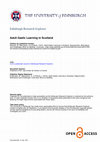
Many people have helped us to complete this study. We are grateful to Bòrd na Gàidhlig's Research... more Many people have helped us to complete this study. We are grateful to Bòrd na Gàidhlig's Research Committee for its useful support during the research, to the providers who provided us with details of their courses, and to the learners who completed the survey and participated in follow-up interviews. v Executive summary Background and overview Provision for adult Gaelic learners has the potential to play a significantly greater role in Gaelic development efforts. Historically, adult learning has received rather less attention than other forms of education and its potential has not been fully realised. This report evaluates the nature of current provision and identifies a number of proposals for development and improvement. This report seeks to respond to BnG's research specification by providing (1) an audit of adult Gaelic learning opportunities and (2) clarity on requirements to establish an effective national system of Gaelic adult education for Scotland. Current GfA provision in Scotland Appendix A provides an up-to-date list of Gaelic classes for adults. The database shows in excess of 160 offerings from approximately 50 providers. Current GfA provision is heavily concentrated in the Highland Council area, the Western Isles, Edinburgh and Greater Glasgow. Provision in other parts of Scotland is either patchy or even nonexistent. Gathering accurate and up-to-date data for this database proved very challenging, for a number of different reasons. Publicly available information, particularly on the Internet, was often incomplete or out of date. There was often a lack of knowledge and 'institutional memory' within provider organisations, especially local authorities, and it was often difficult to find the appropriate contact person with the organisation. Finally, and most disappointingly, a number of courses that had been announced or advertised eventually did not run (though in many cases the subsequent cancellation was itself not well advertised). Motivations and experiences of Gaelic learners A survey questionnaire was created to investigate who is learning Gaelic, what they are learning, where they are learning, how they are learning, and, most importantly, why they are learning. 329 responses were received, of which 216 were usable. 30% of respondents were enrolled on Ùlpan courses, another 30% on the Sabhal Mòr Ostaig distance learning courses, 24% on community education courses, and the remainder at Stow College (2%), at the University of Edinburgh Office of Lifelong Learning (9%), or on other courses (5%). In addition, 60 learners in total were interviewed, 18 on the telephone and 42 via e-mail. Increasing the demand for GfA Learning Gaelic can be encouraged both by direct measures and as an indirect outcome of other language promotion measures. Particularly important are the increased use of Gaelic in public life, the active marketing of Gaelic, and school initiatives that have an impact on GfA.

This thesis analyses the factors affecting the acquisition of literacy in Gaelic-medium primary c... more This thesis analyses the factors affecting the acquisition of literacy in Gaelic-medium primary classrooms, including teaching techniques, availability of resources, and support for language development. In order to investigate this issue thoroughly, the background for the study includes an overview of the sociolinguistic situation of Scottish Gaelic, comparison to other minority language revitalisation efforts, discussion of the theories and practice of bilingualism and bilingual education, and an in-depth look at literacy acquisition, from perceptions of literacy and its value to the mechanics of reading in both a first and a second language. The core of the thesis presents extended observational data from seven case-study classrooms. The targeted population is Primary 1 to 3 pupils as this is the intensive period of reading instruction; the research focus is on literacy in Gaelic as the amount of English at this stage is negligible. Interviews and questionnaires involving educati...
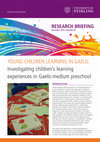
Gaelic-medium (GM) education is an important part of current efforts to re-vitalise the language ... more Gaelic-medium (GM) education is an important part of current efforts to re-vitalise the language in Scotland. Beginning Gaelic-medium education in preschool is seen as a crucial entry point, enhancing the numbers entering GM primary education and facilitating transition to the school learning environment. However, it is essential that GM preschool is of high quality. Government-funded provision is expected to offer children the same learning opportunities as their peers who attend English-medium settings. Meeting these expectations is challenging because most children enter Gaelic-medium preschool from English-speaking homes so that the nursery or playgroup is their only exposure to Gaelic. Our earlier study1 mapped the range and extent of Gaelic-medium early education and childcare provision but in the research reported here our focus was on what happens within settings, the children’s activities in the playroom2 and the ways in which practitioners help them to learn Gaelic, as wel...
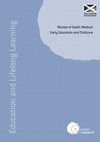
The National Plan for Gaelic 2007-2012 contains ambitious targets for the expansion of Gaelic med... more The National Plan for Gaelic 2007-2012 contains ambitious targets for the expansion of Gaelic medium (GM) primary school education, aiming for 4000 children enrolled in P1 by 2021. GM early years education and childcare plays a crucial role in attracting parents to the 'Gaelic system' and the great majority of children who enrol in GM primary have experienced GM preschool provision at nursery or playgroup. If the target numbers entering GM primary school are to be achieved then there will have to be a considerable expansion in the preschool sector too, given that there were just over 700 children enrolled in GM nurseries for session 2008-09. The National Plan includes a specific commitment to review GM early years education and childcare. The study reported here is a response to that call. It aims to clarify existing provision, identify gaps and make recommendations for changes or developments needed to ensure that the goals of the National Plan are achieved.
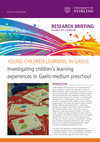
Gaelic-medium (GM) education is an important part of current efforts to revitalise the language i... more Gaelic-medium (GM) education is an important part of current efforts to revitalise the language in Scotland. Beginning Gaelic-medium education in preschool is seen as a crucial entry point, enhancing the numbers entering GM primary education and facilitating transition to the school learning environment. However, it is essential that GM preschool is of high quality. Government-funded provision is expected to offer children the same learning
opportunities as their peers who attend English-medium
settings. Meeting these expectations is challenging because most children enter Gaelic-medium preschool from English-speaking homes so that the nursery or playgroup is their only exposure to Gaelic. Our earlier study mapped the range and extent of Gaelic-medium early education and childcare provision but in the research
reported here our focus was on what happens within settings, the children’s activities in the playroom and the ways in which practitioners help them to learn Gaelic, as well as ensuring that national expectations about curriculum and learning outcomes are met.
Journal of Immersion and Content-Based Language Education, 2016
This report seeks to provide (1) an audit of adult Gaelic learning opportunities in Scotland and ... more This report seeks to provide (1) an audit of adult Gaelic learning opportunities in Scotland and (2) clarity on requirements to establish an effective national system of Gaelic adult education for Scotland.
Research Reports by Irene Pollock






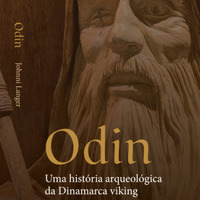



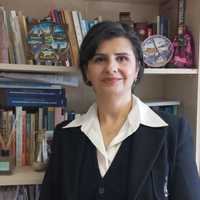
Uploads
Papers by Irene Pollock
opportunities as their peers who attend English-medium
settings. Meeting these expectations is challenging because most children enter Gaelic-medium preschool from English-speaking homes so that the nursery or playgroup is their only exposure to Gaelic. Our earlier study mapped the range and extent of Gaelic-medium early education and childcare provision but in the research
reported here our focus was on what happens within settings, the children’s activities in the playroom and the ways in which practitioners help them to learn Gaelic, as well as ensuring that national expectations about curriculum and learning outcomes are met.
Research Reports by Irene Pollock
opportunities as their peers who attend English-medium
settings. Meeting these expectations is challenging because most children enter Gaelic-medium preschool from English-speaking homes so that the nursery or playgroup is their only exposure to Gaelic. Our earlier study mapped the range and extent of Gaelic-medium early education and childcare provision but in the research
reported here our focus was on what happens within settings, the children’s activities in the playroom and the ways in which practitioners help them to learn Gaelic, as well as ensuring that national expectations about curriculum and learning outcomes are met.